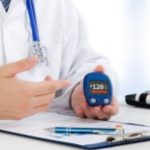A silent heart attack is often symptomless, but the risk of a person dying is the same as that during a symptomatic heart attack. Though silent heart attacks strike men more often than women, the latter are equally at risk. About 45% of all heart attacks are silent, according to research. The condition is detected only during a chance electrogram indicating damage to heart muscles.
Silent heart attacks occur when the blood flow to the heart muscle is reduced or cut off completely. Statistics indicate that about 25% of all heart attacks occur in people below the age of 40 years. The classic symptoms of a silent heart attack such as fatigue or physical discomfort, poor sleep, and age-related ache or pain are often confused as gastric reflux, indigestion, and heartburn.
Speaking about this, Dr Suman Bhandari of Fortis Hospital, Noida, said, “The outcome of a silent heart attack is as bad as one whose symptoms are detected. However, there is a lack of knowledge about these signs, which can delay timely diagnosis and treatment.”
“At times, the location of pain can be misdiagnosed. For instance, some people feel a discomfort in the centre of the chest as opposed to a sharp pain on the left side, a symptom often associated with heart attack. Many people also feel completely normal during and after a silent heart attack which further increases the probability of missing the warning signs. Recurring silent heart attacks can cause scarring and damage to the heart. In the absence of treatment, this condition multiplies the risk of a second and potentially more harmful heart attack.”
Some risk factors for a silent heart attack include smoking, excess weight, lack of exercise, high blood pressure, high cholesterol levels, and diabetes. It is a warning sign to address an underlying health issue. Dr Bhandari added, “One of the primary reasons for this condition is blockage in the flow of blood in the coronary arteries due to build-up of plaque. It is important to understand that even subtle symptoms should not be ignored. Being aware of your risk factors and getting evaluated at the right time is key to preventing further complications.”
Among the various treatment options for a silent heart attack are angioplasty (a special tubing with an attached deflated balloon is threaded up to the coronary arteries); artificial heart valve surgery (abnormal or diseased heart valve is replaced with a healthy one); bypass surgery (treats blocked heart arteries by creating new passages for blood to flow to the heart muscle); cardiomyoplasty; and heart transplant (diseased heart is removed and replaced with a donated healthy human heart).







